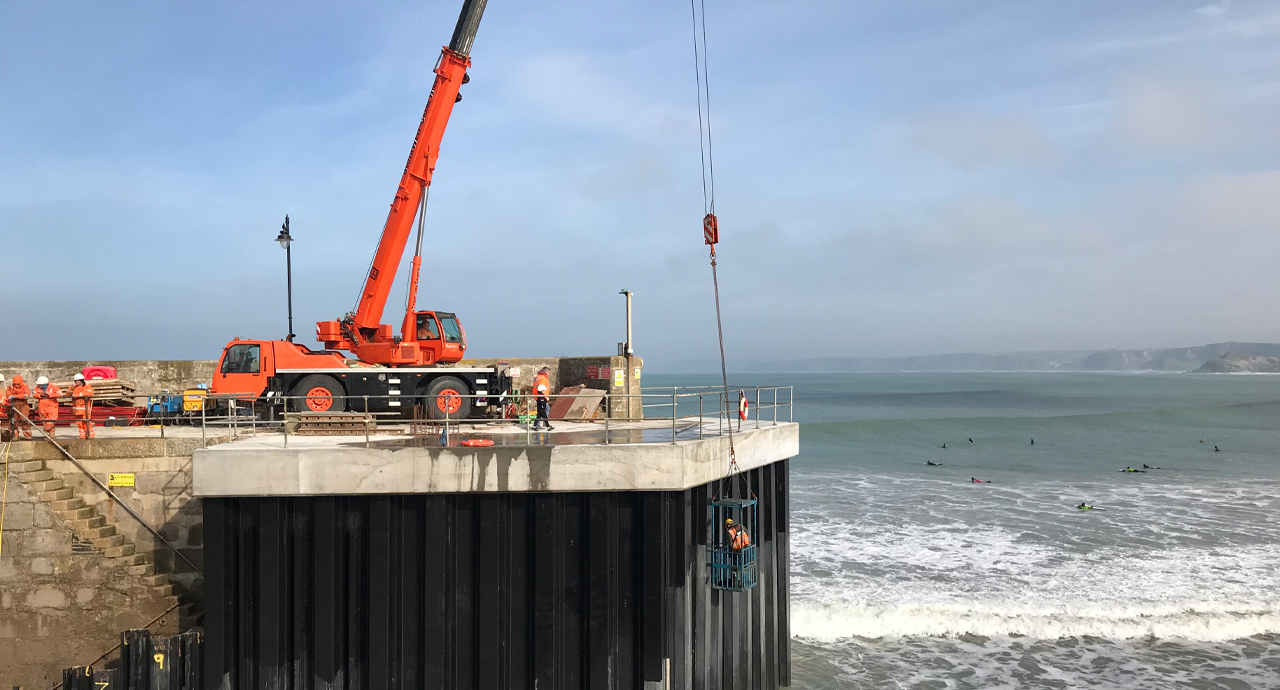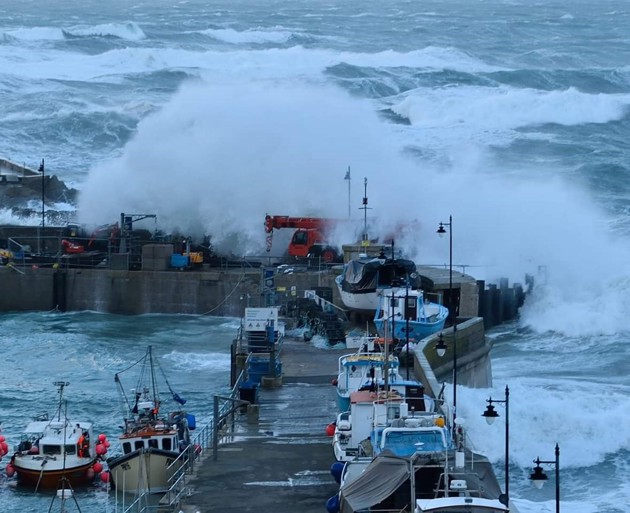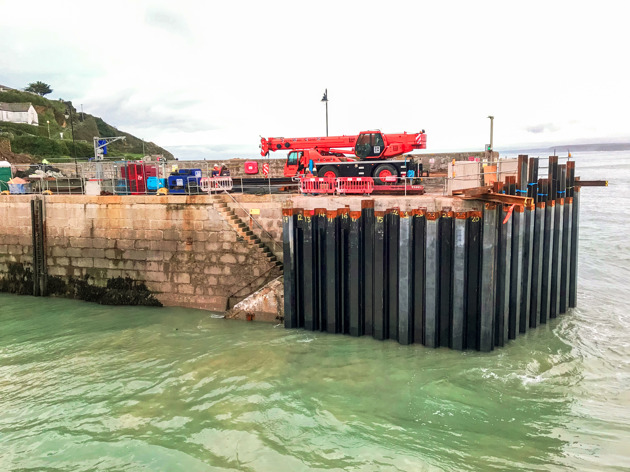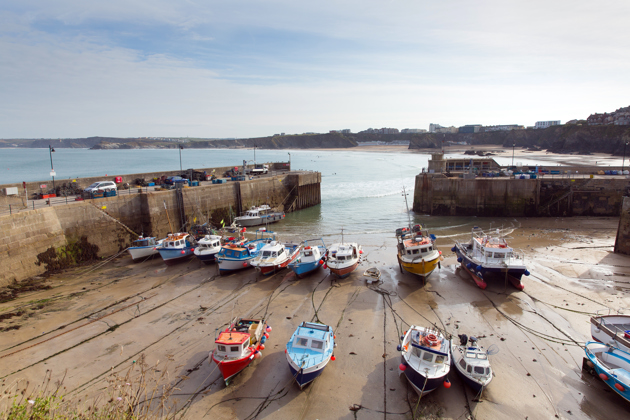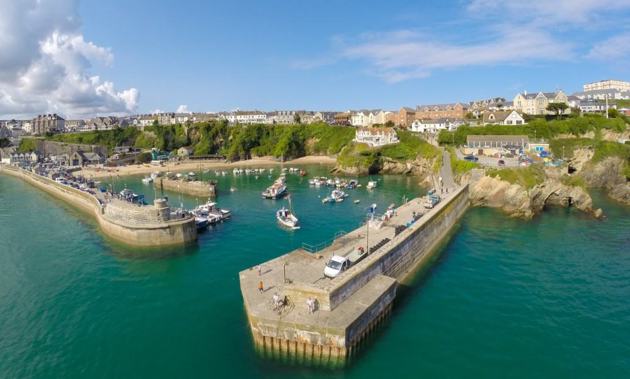A History of Attrition
Repairing the harbour wall
Newquay Harbour was built in 1832 for the export of china clay, iron ore and grain, and the import of coal, manure, salt and limestone.
Over the years, worn by the harsh marine environment, the pier had become severely undercut and was showing signs of instability. Cormac was brought in to stabilise and rebuild the structure to ensure its resilience in decades to come. The designs included using steel sheet piles, concrete and complex masonry repairs.
We also designed in new features to make the pier and harbour wall more accessible to local residents and harbour users, including harbour steps, a plaswood fendering system for docking boats, a new handrail and bollards.
Our extensive experience in marine construction, repairs and sea defences made Cormac the obvious choice for this contract. Offering a multi-disciplinary approach, a wide range of relevant equipment and access to trusted local contractors, the first job was to manage the logistics of the project.

